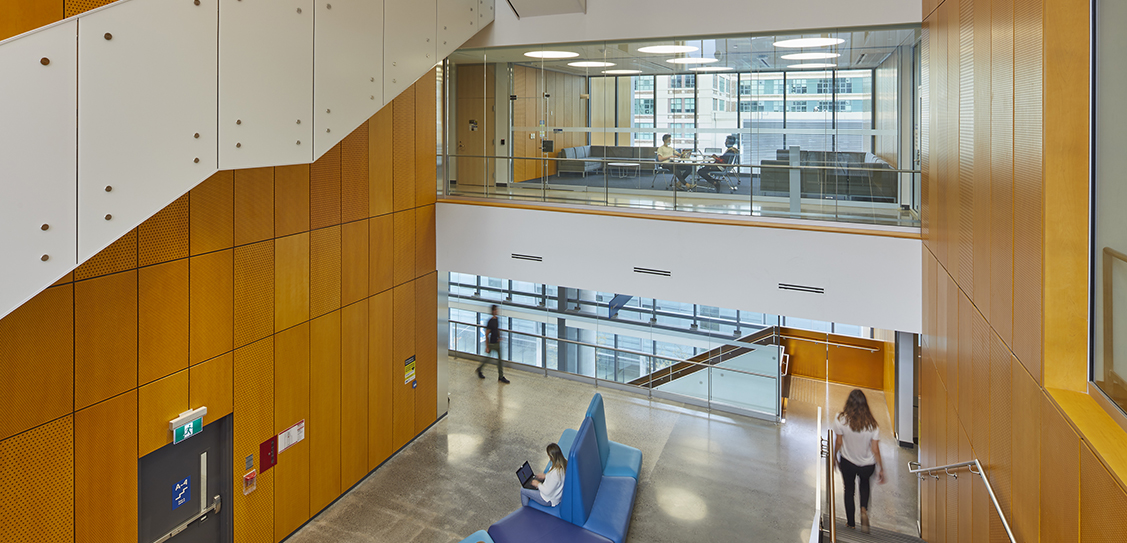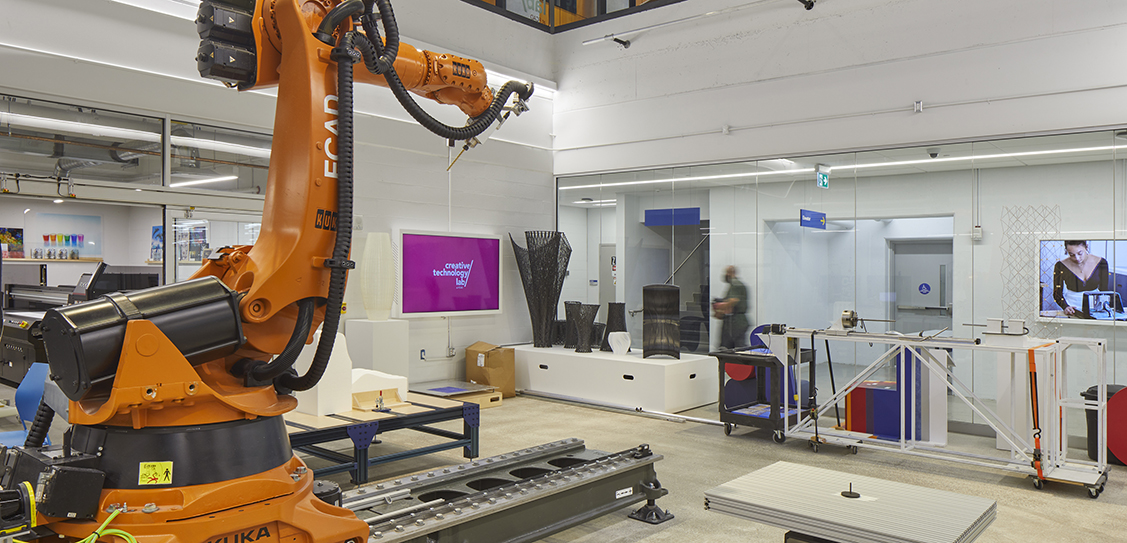The Daphne Cockwell Health Sciences Complex at Ryerson University embraces vertical campus typology, integrating academic departments, residences, laboratories and administrative offices.
The building, which cost $104m CAD, was named as a winner of the 2021 Best Tall Building Award by the Council on Tall Buildings and Urban Habitat (CTBUH).
Located on the eastern edge of Ryerson’s campus, the building covers just under 300,000 sq ft, and was completed as part of Ryerson’s 2008 campus masterplan to guide its expansion through new development and renovations.
It was critical that we introduce a building that not only connects to but also enhances the fabric of the surrounding downtown neighbourhood. This type of consolidated yet integrated design is a vibrant and viable solution for urban campuses of the future
Clad in white aluminium panels and accented with vibrant orange, the building is a bold addition to Toronto’s skyline. Adapting Toronto’s prevalent podium-tower model, the building’s volumes have been lifted to create an active streetscape and continuous public spaces from the ground level to the roof, encouraging students to engage and collaborate with one another.
Four academic departments are situated within the first eight storeys. The Schools of Nursing, Midwifery, Nutrition, and Occupational and Public Health are all supported by new classrooms, teaching kitchens, and laboratories to enhance students’ learning experience.
The building also features a Digital Fabrication laboratory, flexible research facilities and university administration offices. Rising above 18 storeys, residential dormitories house up to 330 students.
At the pedestrian level, the public atrium becomes an important contribution to the city. With a café and spaces to socialise and study. Large windows invite natural light, creating seamless indoor-outdoor connections.
The complex was created with environmentally sound materials and designed to achieve LEED Gold Certification. It is expected to use 32% less energy and consume 35% less potable water than traditional construction. The complex has a green roof that acts as an urban farm to provide fresh produce to the ground-floor cafe and a greywater system for faucets, toilets, and showers.
Another unique feature is a metering and monitoring system where resident students can view their energy and water consumption online. The programme also assists the university’s research program, Living Laboratory, which is aimed at developing smart and ongoing solutions for operations based on user-driven research.



.jpg)